Praise the Lord and Pass the Homeless Housing
Caught in the Crossfire of the Sacred and the Profane
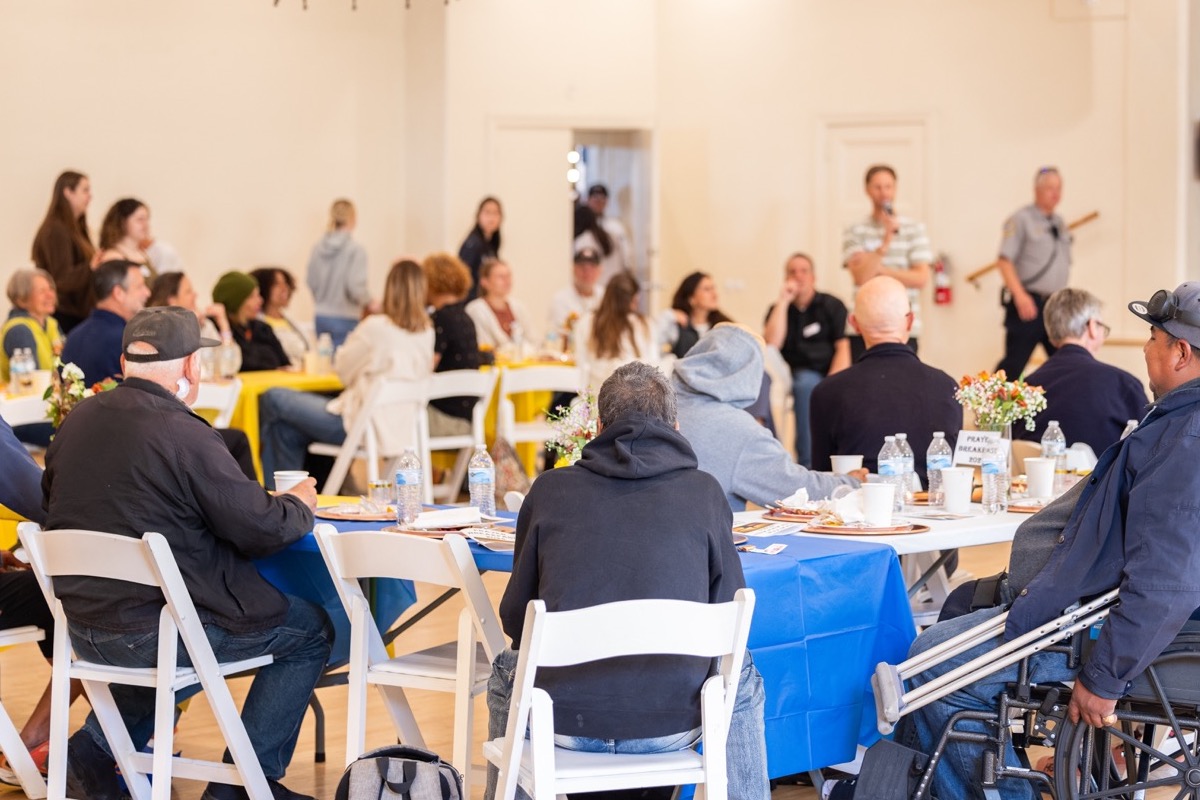
EAT, SPRAY, LOVE: I was sawing away at a slab of French toast when she wheeled up with her suitcase and sat down across the banquet table from me. She wore a blue T-shirt and occupied the indeterminate bracket known as middle age. She had dirty blonde hair piled on top of her head and blue eyes that leaked hot smoke. Out of her mouth poured every four-letter word in the book and many more that have yet to be published. Maybe, I thought, this was her version of prayer. Often, it’s mine too.
It never stopped.
We both found ourselves attending Santa Barbara’s first annual homeless prayer breakfast, held this Tuesday morning at the Veterans’ Memorial Building along Cabrillo Boulevard. All around us were people singing about God, clapping hands, expressing gratitude, and beaming those 150-watt smiles common to people touched by Jesus. Maybe there were 70 people assembled. Heaping plates of scrambled eggs, potatoes, bacon, sausage, fruit, French toast, and coffee were brought out by caterers with Freedom 4 Youth — a nonprofit that rescues juvenile offenders from the clutches of the criminal justice system.
Bouquets of flowers lined the tables. Early morning sunshine bathed the room. The words of the songs — about redemption, hope, forgiveness, and love — seemed to get hijacked by the hall’s muffled acoustics. Or maybe it was the stream of profanity emanating from my table companion. “Dream on,” she snorted. “Good luck,” she sneered. I sort of saw her point. And sort of didn’t.
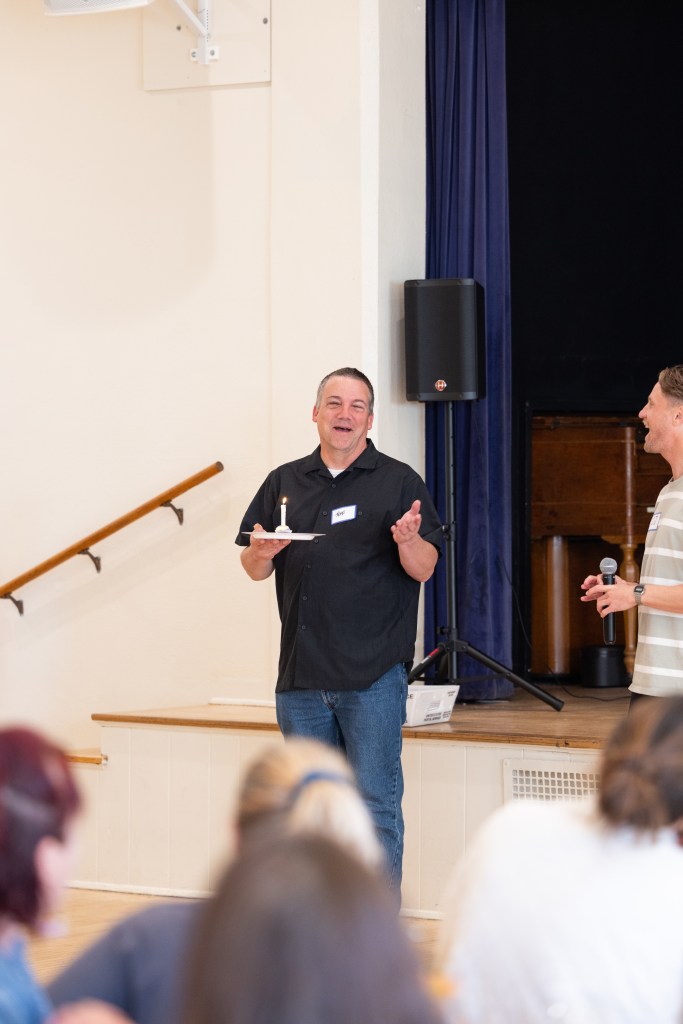
The idea for the homeless prayer breakfast was hatched by Jeff Shaffer, a onetime class clown turned free-floating religious heretic who, 20 years ago, began feeding the homeless people hanging out in Pershing Park. In the intervening years, Shaffer would vastly expand his un-collared ministry, his low-key style and twinkle in his eye proving all but irresistible.
On May 1, Shaffer turns 60. As an early birthday present to himself, he decided to throw a prayer breakfast — like the one held every year at the Hilton for a higher-end suit-and-tie crowd — but for, of, and by homeless people themselves. His would be free. People could come as they were. “Santa Barbara is a pretty postcard town,” Shaffer explained. “But there are two sides to that postcard. Don’t we want to see the other side too?” With the middle class fast evaporating, he added, “Some of us may not be immune. It’s better to see it, accept it, embrace it,” he said. “Because you can’t avoid it.”
Helping to organize the event was a 49-year-old, barrel-chested guy who wears cargo shorts and high-top black boots that show off his bulging calves. He goes by Rocky and sports a white billy-goat beard that’s rivaled only by Nebuchadnezzar’s. A former waiter from Ventura, Rocky said he was homeless for 13 years and lived in a tent by Highway 126. “It was hell,” he said. He moved to Santa Barbara four years ago to get sober. He managed to make it. Little wonder that when Rocky talks about the Almighty, he doesn’t refer to “God” or “Jesus,” but instead to “a higher power.”
For about a year, Rocky lived in the DignityMoves village of tiny homes — transitional housing for people on the streets — that recently opened up on Santa Barbara Street. In September, he became one of 13 DignityMoves residents to move into the new Vera Cruz Village apartments built by the Housing Authority as permanent homes for the same population. To the extent Rocky preaches, he preaches patience. More housing is coming, he says. “I want to let people know they’re not forgotten, that there will be housing soon.”
When Rocky says this, he hasn’t been staring into the sun or eating grasshoppers, à la John the Baptist, in the desert. He just happens to know what’s in the pipeline. This Friday evening, for example, there will be a grand ribbon-cutting ceremony for DignityMoves’ new tiny-home village — La Posada — off Modoc Road by the county’s old Juvenile Hall. That’s 80 new units.
Partners, pets, possessions, and property are allowed. Residents — recruited from the many nearby encampments — will begin moving in for real on April 22. When that happens, this will bring the total number of tiny-home units built by DignityMoves — in partnership with the County of Santa Barbara, which owns the property involved — to 204. That’s in the past 18 months.
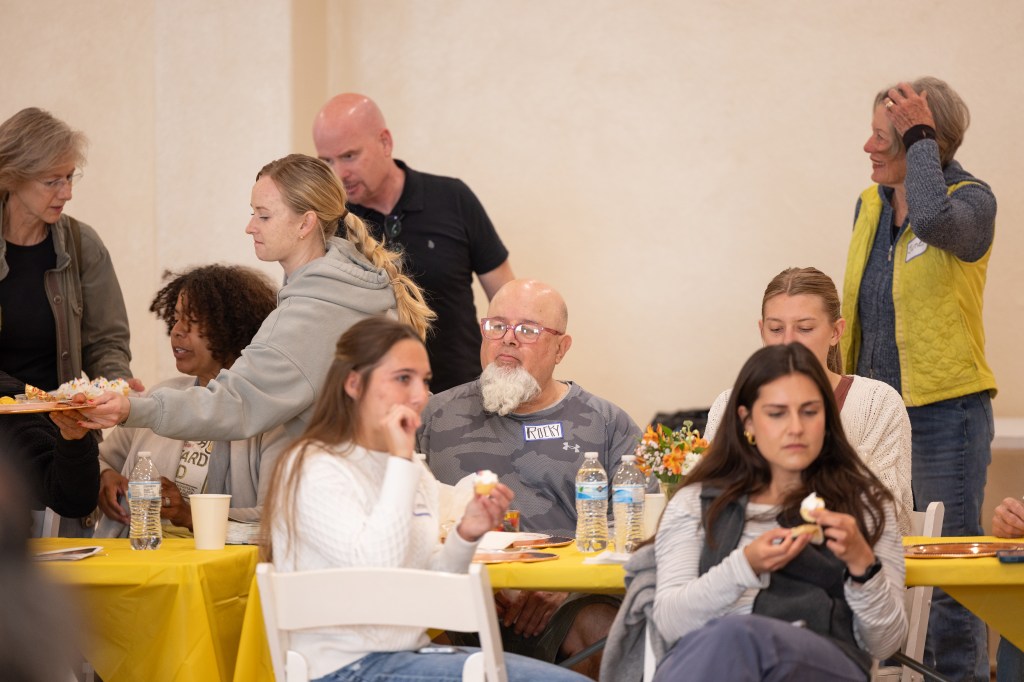
Two more villages are on the drawing boards for the South Coast. One will target unhoused families. When all is said and done, that will be 300 new units of transitional housing. Running day-to-day operations will be Good Samaritan, headquartered out of Santa Maria. Their formula is to bombard residents with every kind of support and service for residents to transition from the streets to the great indoors successfully.
Every population, admittedly, is different. People who’ve lived in encampments don’t necessarily respond the same as people who are accustomed to sleeping under the courthouse eaves. But preliminary numbers appear encouraging. Of the 130 people served by the tiny-home village on Santa Barbara Street, 70 percent reportedly transitioned into permanent housing. One year later, DignityMoves claims, 96 percent of those residents are still indoors. At a time when California’s homeless population is going through the roof, Santa Barbara is going the other way, reporting a slight drop in homeless numbers. The powers-that-be cite the proliferation of tiny homes as the reason why.
By the way, the food at the prayer breakfast was seriously good. The only time my table companion stopped swearing was to ask for another plate. As if by magic, one would appear. In the moment, I was kind of curious why she sat across the table from me. I’ll never know. But I’m glad she did.
Premier Events
Thu, May 02
5:00 PM
Santa Barbara
Things with Wings at Art & Soul
Sat, May 04
10:00 AM
Lompoc
RocketTown Comic Con 2024
Wed, May 01
7:30 PM
Santa Barbara
American Theatre Guild Presents “Come From Away”
Thu, May 02
5:00 PM
Santa Barbara
100th Birthday Tribute for James Galanos
Thu, May 02
5:00 PM
Santa Barbara
Meet the Creator of The Caregiver Oracle Deck
Fri, May 03
4:00 PM
Santa Barbara
Santa Barbara Fair+Expo “Double Thrill Double Fun”
Fri, May 03
8:00 PM
Santa barbara
Performance by Marca MP
Sat, May 04
10:00 AM
Solvang
Touch A Truck
Sat, May 04
11:00 AM
Santa Barbara
Mental Wellness Center’s 28th Annual Arts Faire
Sat, May 04
11:00 AM
Santa Barbara
Community History Day
Sat, May 04
3:00 PM
Solvang
The SYV Chorale Presents Disney Magic Concert
Sat, May 04
7:00 PM
Santa Barbara
A Star Wars Cantina Celebration: Renegades, Rebels, and Rogues
Thu, May 02 5:00 PM
Santa Barbara
Things with Wings at Art & Soul
Sat, May 04 10:00 AM
Lompoc
RocketTown Comic Con 2024
Wed, May 01 7:30 PM
Santa Barbara
American Theatre Guild Presents “Come From Away”
Thu, May 02 5:00 PM
Santa Barbara
100th Birthday Tribute for James Galanos
Thu, May 02 5:00 PM
Santa Barbara
Meet the Creator of The Caregiver Oracle Deck
Fri, May 03 4:00 PM
Santa Barbara
Santa Barbara Fair+Expo “Double Thrill Double Fun”
Fri, May 03 8:00 PM
Santa barbara
Performance by Marca MP
Sat, May 04 10:00 AM
Solvang
Touch A Truck
Sat, May 04 11:00 AM
Santa Barbara
Mental Wellness Center’s 28th Annual Arts Faire
Sat, May 04 11:00 AM
Santa Barbara
Community History Day
Sat, May 04 3:00 PM
Solvang
The SYV Chorale Presents Disney Magic Concert
Sat, May 04 7:00 PM
Santa Barbara

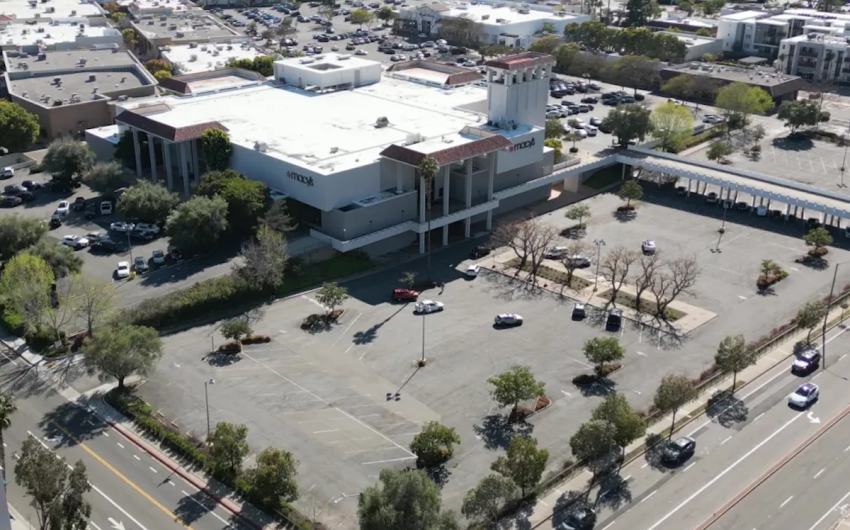
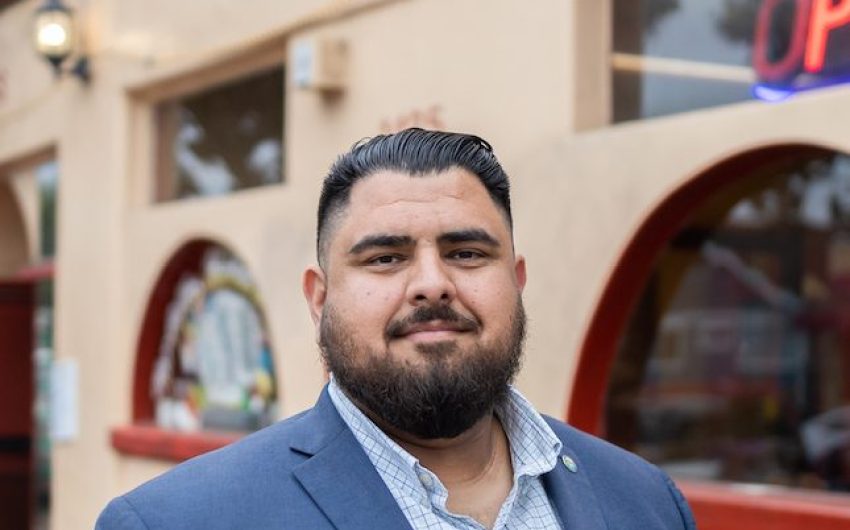
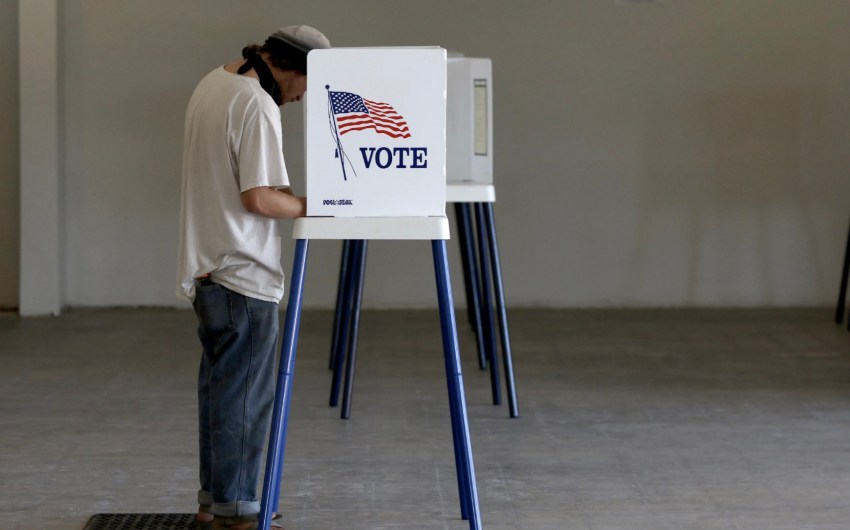

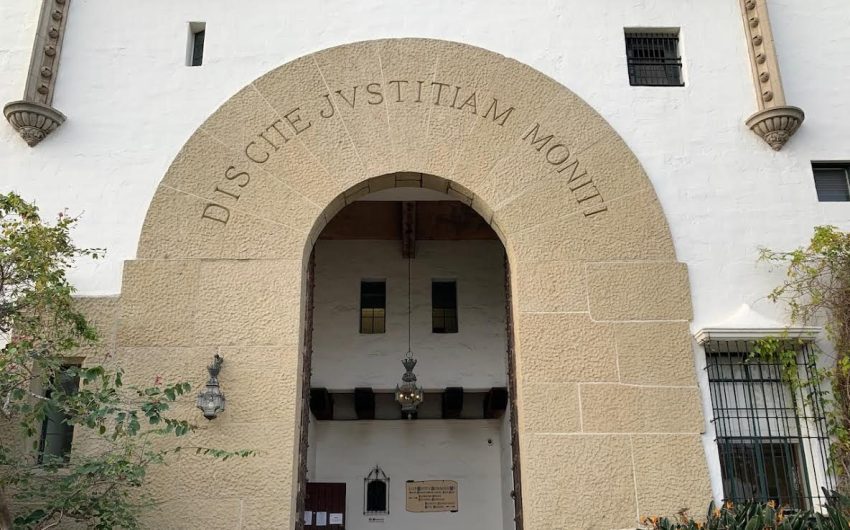







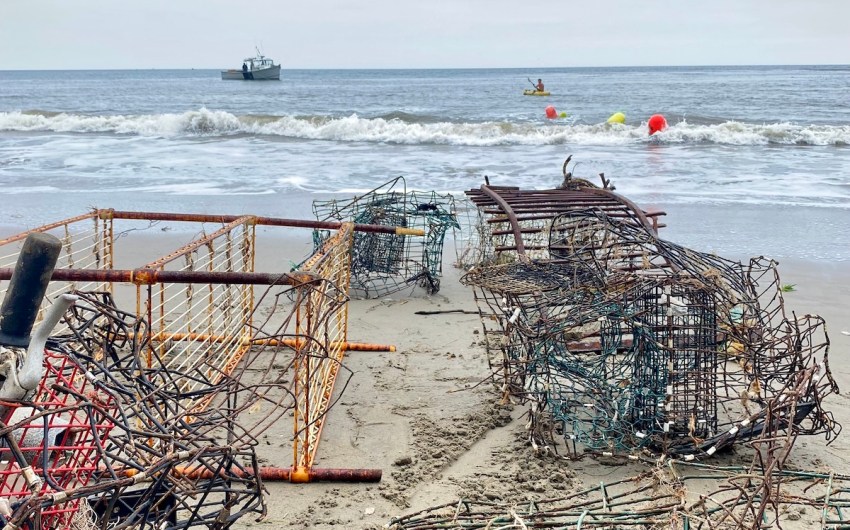









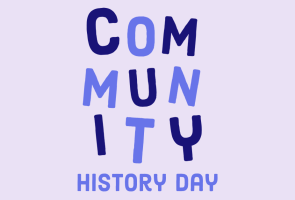
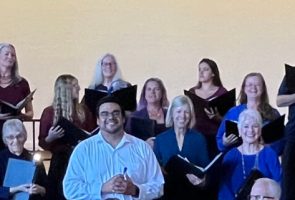

You must be logged in to post a comment.